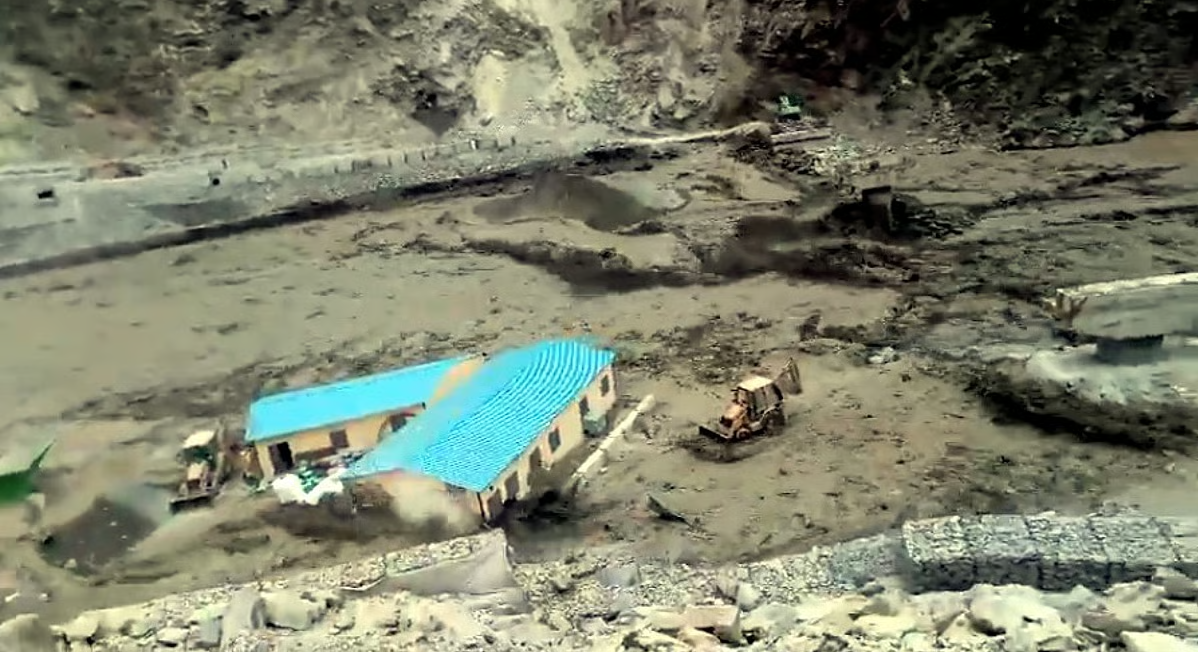Why do Himalayan states experience frequent cloudbursts? What is the reason behind this?
Why Are Clouds Bursting Frequently In The Himalayan States: Cloudburst In Himachal Pradesh, the incidents of cloudburst in the hilly states have increased a lot in the last few years. So far, 35 cloudburst incidents have taken place in Himachal Pradesh, which is more than last year. In the year 2024, there were about 27 cloudburst incidents. But this time, in one and a half months, last year’s figure has been left behind.
This is the figure from June 30 till now, which can increase further, because it is expected that the rainy season will last longer this time. So much destruction has happened in just about one and a half months. Weather experts have said that this time the rains will remain active till September. A cloudburst caused devastation in Ganvi of the Kullu district of Himachal Pradesh. Jagran
There has been a huge loss of life and property due to a cloudburst in Himachal. This time the loss is more than in the past years. Out of 35 incidents of cloudburst, 19 have happened in the Mandi district alone.
What is called a cloud burst?
Imagine that a piece of cloud is a huge balloon filled with water. When this balloon is so full that it cannot hold any more water inside it, then suddenly all the water falls in one place in a very short time. The condition of 10 cm or more rain in a very small place in an hour is called a cloud burst. This happens more in the mountains because the mountains push the clouds up, due to which they cool down quickly, and the water droplets become very big and they fall down together and cause havoc.
This rain is very heavy, which suddenly creates a flood-like situation. This water that suddenly falls on the ground moves downwards at a high speed, taking with it trees, plants, houses, stones, and whatever else comes in its way. The speed is such that it does not give anyone a chance to recover.
Why are so many clouds bursting this time?
The simple answer to this is that this season there is a lot of humidity, due to this, the speed of cloud formation on the mountains is fast. That is why in small catchment areas, stormy clouds are dropping 100 mm of water per hour or even more. Meteorologists call this a cloud burst.
A cloud burst occurs in a very small area and in a very short time. In such a situation, when such an incident occurs in a populated area, there is a huge loss of life and property. Where there is no population, the cloud bursts and goes away. Sometimes, only the Meteorological Department comes to know about it. Since cloud burst incidents happen only during the rainy season, it is assumed that there has been a lot of rain in the mountains, due to which the water level of rivers and streams suddenly increases.
Why are there so many incidents this time?
The ground reality of the Himalayan states is that this time, the incidents of cloudbursts are increasing. In this monsoon, clouds have burst in many valleys in Uttarakhand, Himachal Pradesh, and other states. The Meteorological Department has termed the incident that caused massive destruction in Uttarakhand’s Uttarkashi district as a flash flood or cloud-burst. In the initial scientific investigation, a cloud-burst is being considered as a glacial lake outburst flood (GLOF), landslide-jam, or a combination of these.
Cloud Burst J&K
The Meteorological Department has termed the incident that caused massive destruction in Jammu and Kashmir as a flash flood or cloud burst.
There have been other incidents of cloudbursts too, but they have not caused such loss of life and property as happened in Dharali or Kishtwar. Government agencies usually collect data on the total number of incidents this season only after the rainy season is over. In such a situation, the complete data for this year has not been revealed yet. But, it is certain that this year there are more cloudbursts.
Why does an accident become so big? How do lakes and silt become a disaster?
Cloudbursts do not bring only water. Soil, boulders, wood, and glacier-moraine silt all flow together from the upper slopes. This turns the water into a debris flow, which has a very high speed and destructive power. Three things increase the damage in this-
- First: Narrow and V-shaped valleys and steep slopes. In such a situation, the velocity of water increases a lot, and it sweeps away whatever comes in its way.
- Second: If natural lakes (temporary lake above) or a temporary lake formed immediately in the valley after a cloudburst breaks, then a sudden massive wave comes. In the Uttarkashi incident, reports of the formation of a temporary lake above are coming to the fore.
- Third: Encroachment in river channels, cutting slopes for roads/infrastructure projects, debris dumping, deforestation, and choke-points like narrow culverts. All these cause the silt and boulders coming from above to get jammed and then suddenly break down and cause havoc below.
Can cloudbursts be accurately predicted?
Accurate cloud-burst prediction at the village level is very difficult. The reason behind this is that clouds burst in a very small area. It is beyond the power of the Meteorological Department to make such an accurate assessment. Yes, the Meteorological Department is capable of giving information about heavy rain or light rain in a large area. The Meteorological Department is also capable of giving information about storms. Meteorologists can report weather events that will occur in the next three hours.
Clouds keep bursting, so why are the losses increasing?
Former Additional Director General of the Meteorological Department, Dr. Anand Sharma, says that many factors are responsible for the loss. Hotels and restaurants are being built in the entire Himalayas, from the banks of roads, rivers, and streams to river areas. Hotels are being built. In the name of increasing tourism, the governments are not strictly stopping such things.
He says that illegal construction in the river area has a major role in the disaster that happened in Dharali, Uttarakhand. If clouds burst on the empty peak of a mountain, then some trees and plants will be damaged, but as soon as the water falls in huge quantities and moves downwards carrying silt, trees, plants, soil, stones, it takes with it everything that comes in its way. In such a situation, damage is certain.
If a cloud burst is natural, then how can the damage be prevented?
The need of the hour is to scientifically map each valley’s micro-catchments, old debris-flow paths, temporary lakes/moraine-dams, choke-points, and river-setback lines.
- Rain-gauge, radar coverage, real-time water-level sensor; mobile alert system up to village level.
- There should be no encroachment on rivers, streams, and their catchment areas under any circumstances.
- Dumping zones of roads, hydro projects, and tunnels should be at scientific locations; proper design of slope stability should be done, and work should be done accordingly.
- It is normal for a temporary lake to form upstream after a cloud burst. When it breaks, a secondary flood is inevitable. A monitoring system should be created for this.
Where and when did the clouds burst?
- In the year 2024, there have been 27 incidents of cloud bursts in the monsoon season in Himachal Pradesh. At least 59 lives were lost in these.
- In the year 2022, a massive flash flood on 8 July near Pahalgam on the Amarnath Yatra route caused several deaths.
- In 2021, 26 deaths were reported due to a cloudburst in the Hunjar hamlet of Kishtwar, Jammu and Kashmir.
- In the year 2021, a cloudburst occurred on July 18 in the Uttarkashi district of Uttarakhand.
- In the year 2018, a cloud burst occurred in Belgaum, Karnataka, on 4 May. There was no major damage in this.
- In 2013, there was a huge devastation after a cloudburst in Kedarnath. Hundreds of people died. This accident happened on 16th and 17th June, respectively, over two days.
- In the year 2010, cloudbursts occurred several times in a row in the old Leh city on 6th August. The entire city was devastated. The number of deaths recorded was around 115.
- Himachal Pradesh, Uttarakhand, Ladakh, Jammu and Kashmir are very sensitive areas in terms of cloudburst. Cloudbursts are common here during the monsoon season. The noise is made only when there is a huge loss of life and property.
ALSO READ: What Are The Benefits Of Sunlight





